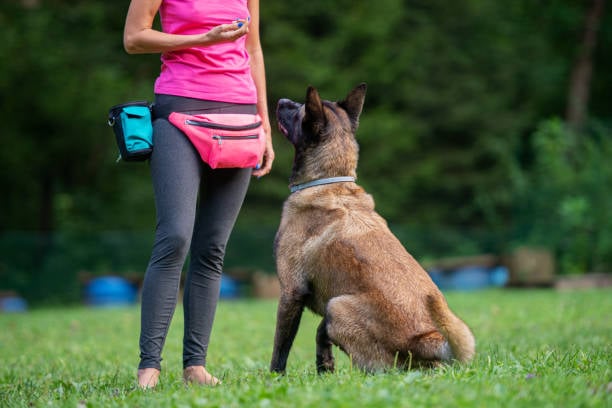Long gone are the days when dog training was confined to physical spaces and conventional methods. Today, technology plays a pivotal role in enhancing dog training techniques, making them more accessible, effective, and engaging for both dogs and their trainers. This blog post explores the dynamic role of technology in dog training, highlighting the innovative tools and platforms that are setting new benchmarks in canine education.
Virtual Training Platforms

The advent of virtual dog training platforms has been a game-changer, especially in times when face-to-face interaction may not be feasible. These platforms offer live video sessions, allowing trainers to coach pet owners and their dogs in real-time, irrespective of geographical barriers. This not only provides flexibility but also ensures that training can continue uninterrupted, maintaining consistency, which is crucial for effective learning.
Mobile Training Apps
Mobile apps have taken dog training to new heights of convenience. From providing daily training routines to offering a library of instructional videos and articles, these apps serve as a pocket-sized trainer. They often come with progress tracking features, enabling pet owners to set goals, monitor their dog's advancements, and receive personalized recommendations based on the dog's performance and behavior.
Wearable Technology

Wearable tech for dogs, such as smart collars, harnesses, and activity trackers, offer valuable insights into a dog's behavior, health, and activity levels. By monitoring aspects like heart rate, sleep quality, and activity patterns, trainers and pet owners can better understand the dog's needs, stressors, and responses to training. This data-driven approach allows for a more tailored training regimen that aligns with the dog's physical and emotional well-being.
Interactive Training Toys and Games
The fusion of technology with traditional dog toys has led to the development of interactive training tools that stimulate a dog's mind while providing entertainment. These tech-enabled toys often include features like treat dispensing, motion sensors, and sound effects to engage the dog and reinforce positive behavior. By turning training into a fun and rewarding activity, these tools can significantly enhance learning and retention.
Online Communities and Resources

Technology has also facilitated the creation of vast online communities where dog trainers, pet owners, and enthusiasts can converge. Platforms like forums, social media groups, and blogs serve as repositories of knowledge, experience, and support. They offer a space for sharing tips, troubleshooting training challenges, and celebrating milestones, fostering a sense of camaraderie and collective growth.
The Future of Dog Training with AI and AR
Looking ahead, emerging technologies like artificial intelligence (AI) and augmented reality (AR) hold promising potential for dog training. AI could offer personalized training programs that adapt in real-time to a dog's progress, while AR could create immersive training scenarios that simulate real-world challenges and distractions, all from the safety of home.
The role of technology in dog training is multifaceted and continually evolving. By embracing these innovations, trainers and pet owners can access a wealth of resources that make training more efficient, enjoyable, and effective. As we forge ahead, the potential for technology to further revolutionize dog training is boundless, promising a future where every dog has the opportunity to learn and thrive, supported by the best that technology has to offer. In this tech-enhanced training landscape, the bond between dogs and their humans stands to become stronger than ever, built on understanding, mutual respect, and a shared journey of growth and discovery.
Subscribe to the Gingr Blog






